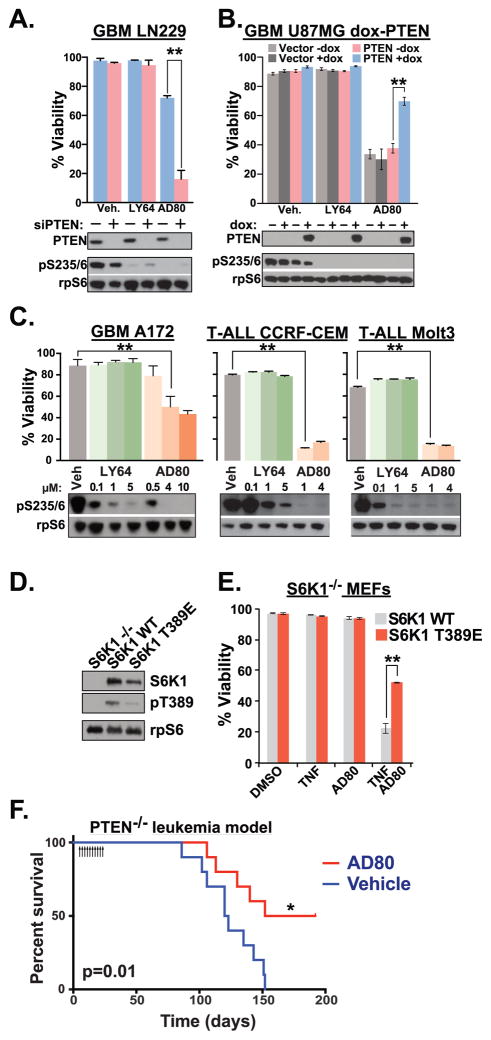FIGURE 1.
Pharmacologic targeting of S6K1 in PTEN-deficient cells. (a) PTEN-expressing LN229 glioblastoma cells were transfected with Non-Targeting siRNA (siNT) or siPTEN duplexes, then cultured in 5 μM LY-2779964 (LY64), 10 μM AD80, or vehicle control (Veh). Mean cell viability was determined after 72 hours of culture in indicated conditions (top). Immunoblot of cell lysates from parallel wells after 3 hours demonstrated knockdown of PTEN and inhibition of ribosomal protein S6 (rpS6) phosphorylation (bottom) n=4. (b) PTEN-deficient U87 glioblastoma cells were transduced with vector or doxycycline-regulated PTEN expression constructs. After 48 hours of doxycycline, cells were treated with vehicle, 5 μM LY-2779964, or 10 μM AD80. n=3 viability; n=2 immunoblots. (c) Viability and immunoblot analysis of PTEN-deficient and T-ALL cells treated as in (a). n=4 viability analyses; n=2 immunoblot analyses. (d) Expression of S6K1-WT or S6K1 T389E in S6K1−/− MEFs after viral transduction and selection by sorting. (e) S6K1−/− MEFs reconstituted with WT S6K1 or S6K1 T389E were treated with 30ng/ml TNFα, 10 μM AD80 or combined agents as indicated. S6K1 T389E mediated resistance to TNFα + AD80. n=4. See also Figure S1. (f) CD45.2+ PTEN-deficient bone marrow cells were transplanted into CD45.1+ congenic recipient mice. Groups of 10 mice were injected i.p. with 20 mg/kg AD80 or vehicle control for 10 consecutive days starting at day 5 post transplant, then monitored for signs of leukemia. * p=0.01 Log-Rank test. See also Figure S2. **p<0.01 by two-tailed t-test (a–e).

